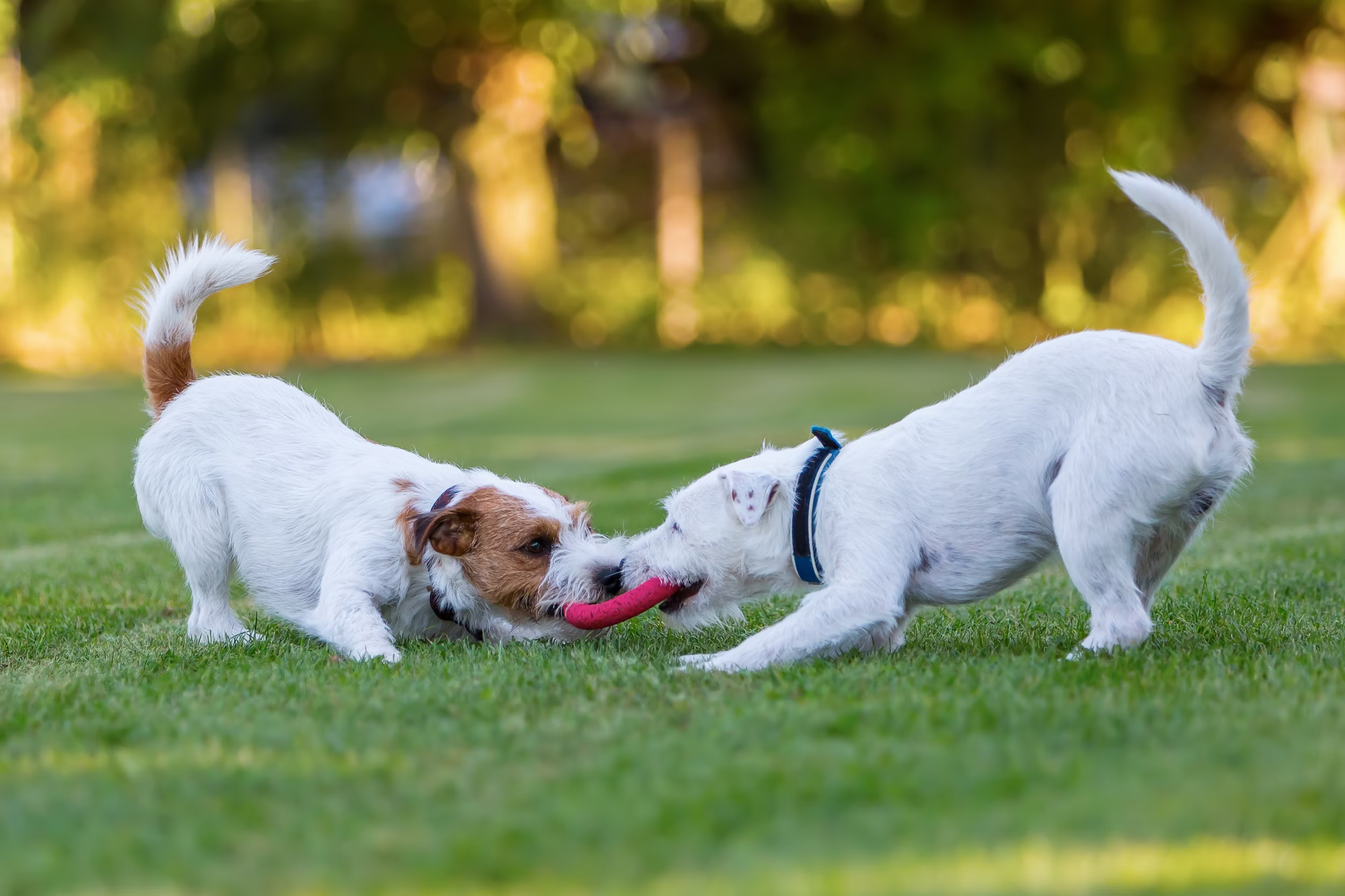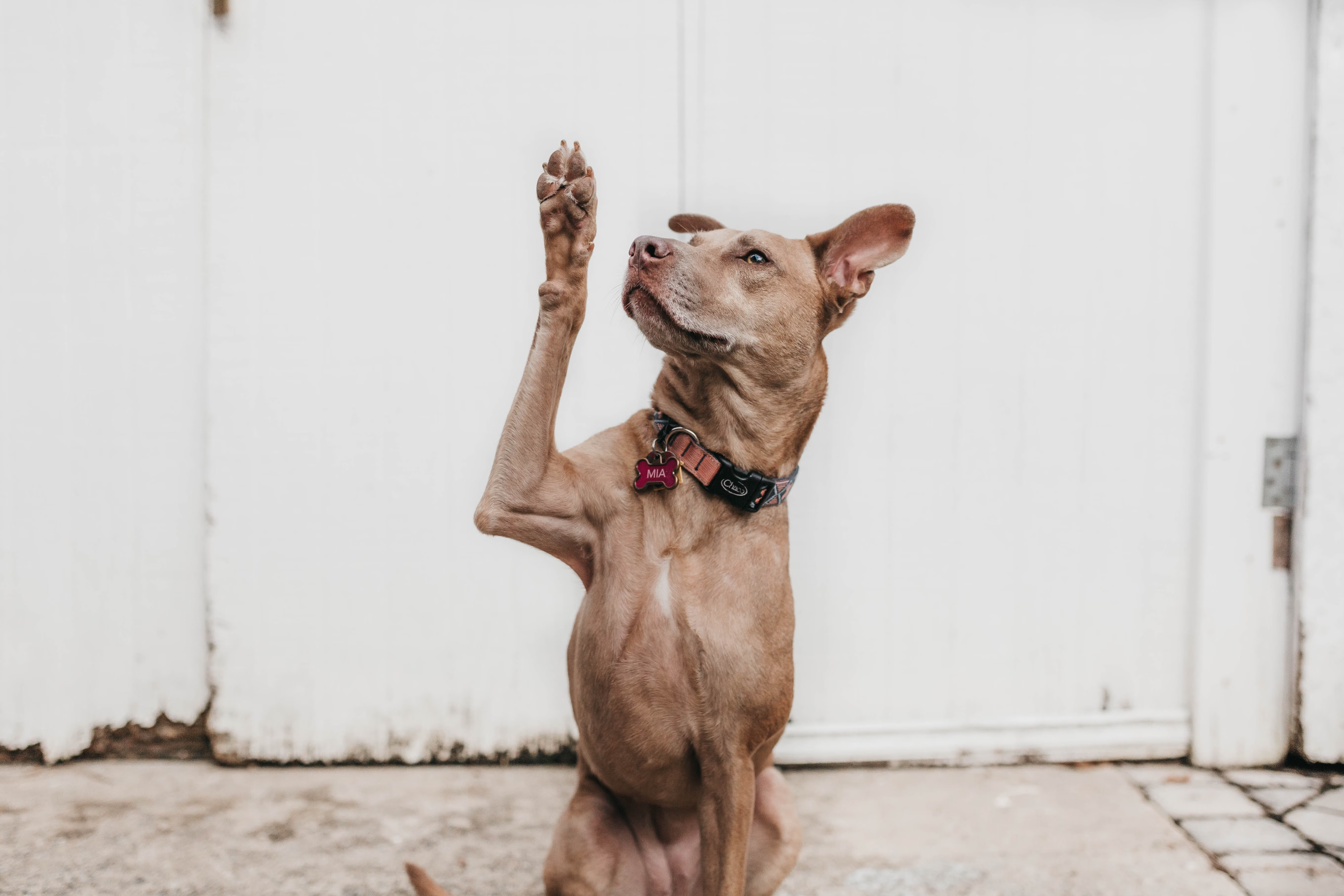Dogs make plenty of vocalizations, from barks and yips to growls and howls. However, when it comes to communicating, they say much more with their bodies than their voices. That’s why understanding canine body language is so important. You can interpret their emotions and intentions by knowing what to look for in your dog’s postures and body movements. And that’s information you can use to keep them—and other pets and people—safe and happy. So, let’s review some common dog body language and explain what these postures likely convey.
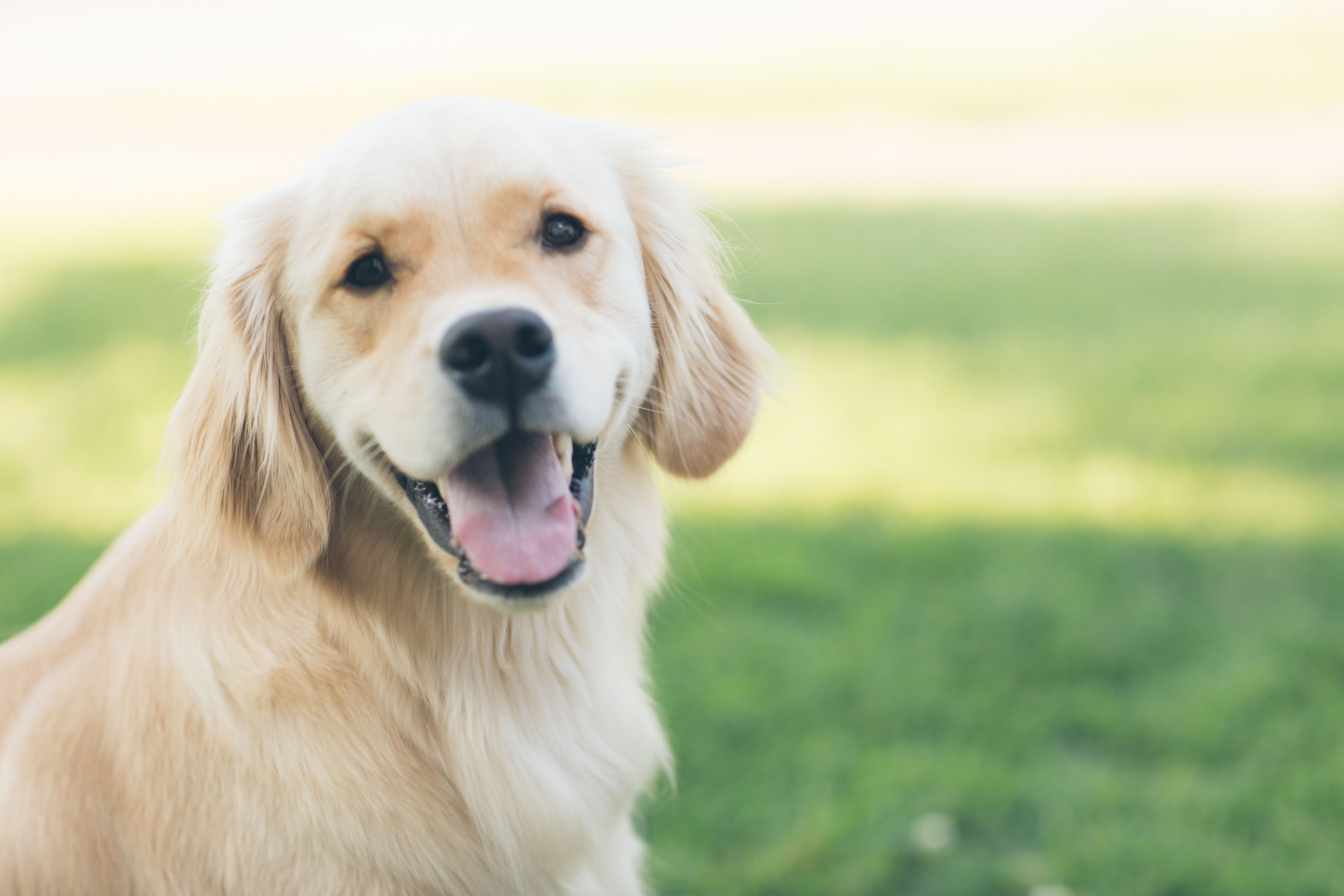
Happy body language
A happy dog has a relaxed body posture with a loose and wagging tail. They hold their ears in a natural position and may even have what appears like a grin on their face. If your dog exhibits this type of body language, it’s a good sign that they feel content and comfortable.
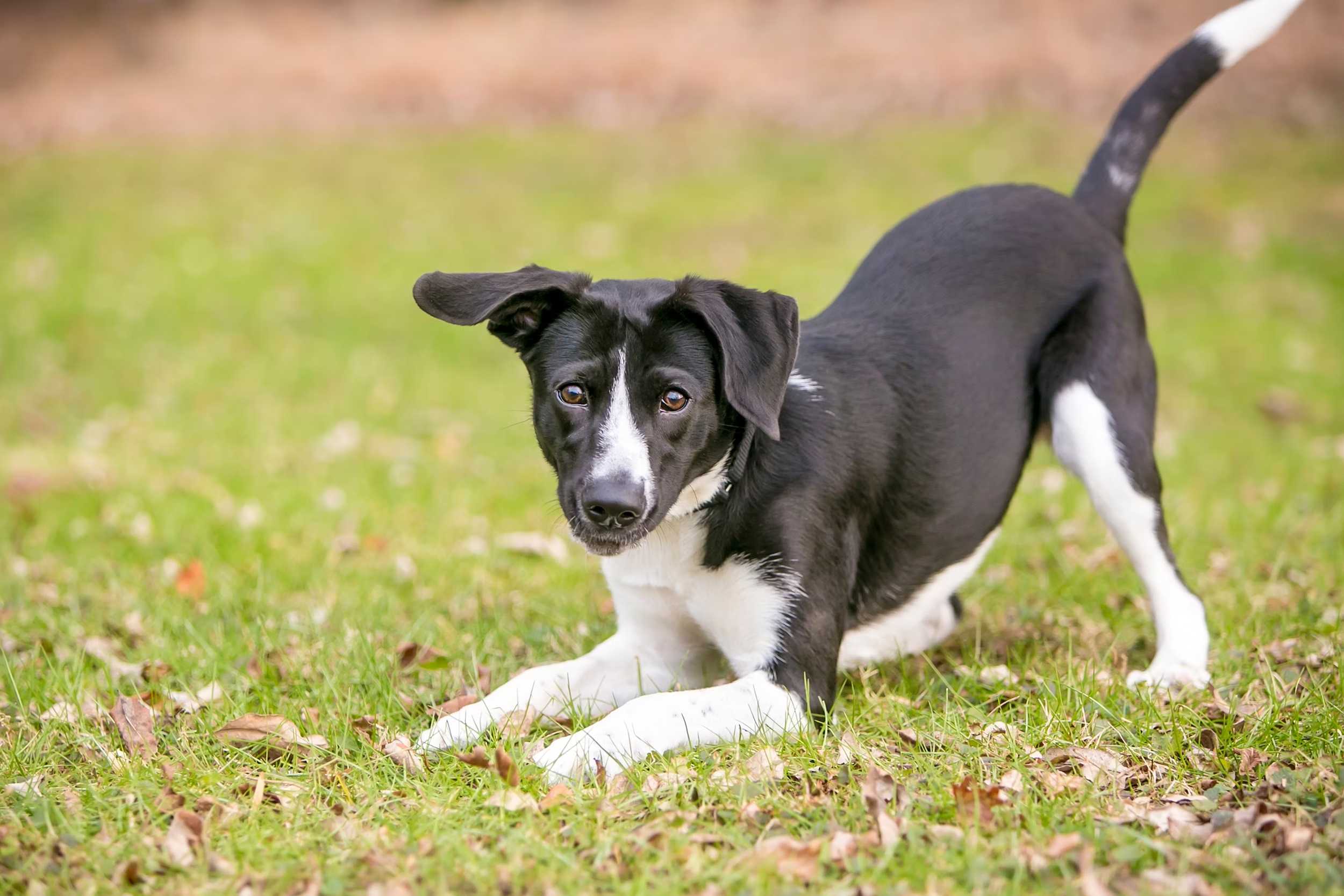
Playful body language
A playful dog will use body language similar to a happy dog but with more energy. Dogs in a playful mood have a bouncy gait and often wag their tail vigorously. They may also play bow. This common pose involves lowering their front legs and raising their hind end. When you see this posture, it’s your cue that your dog is ready to play with you or another nearby person or pet.
Calm body language
Calm dogs have a relaxed body posture, with their tail and ears in a neutral position. They may be lying down or sitting, with their weight evenly distributed. If you see this body language, it’s a signal that your dog feels comfortable and safe.
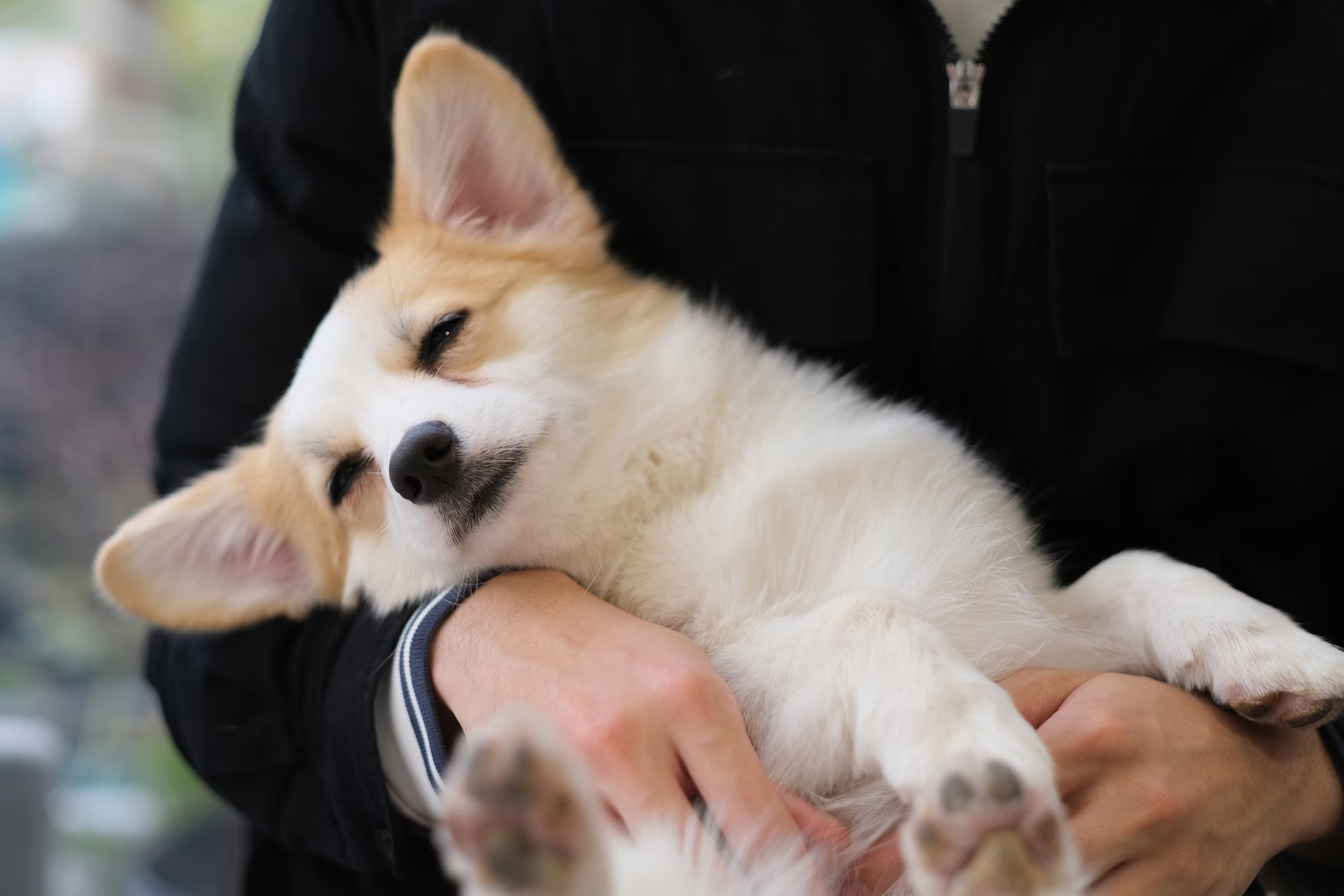
Secure body language
A dog that feels safe around their human typically displays a relaxed and comfortable body posture. Expect to see their tail in a neutral position or wagging gently and their ears in a natural position or slightly forward. They may also have a soft gaze and keep their mouth slightly open, indicating a sense of contentment. Another sign that a dog feels secure in their pet parent’s presence is when they seek physical contact, such as snuggling or resting their head on their human’s lap.
Excited or over-stimulated body language
When a dog is excited or over-stimulated, their body language can become exaggerated. For example, they may pant heavily, pace, or even jump up and down. They may wag their tail, but not necessarily in a relaxed way. For dogs, “excited” doesn’t always mean happy. If your dog shows signs of being over-stimulated or excited, it’s important to help them calm down before they become too overwhelmed. Consider giving your pup a time-out in a quiet area away from other people and dogs.
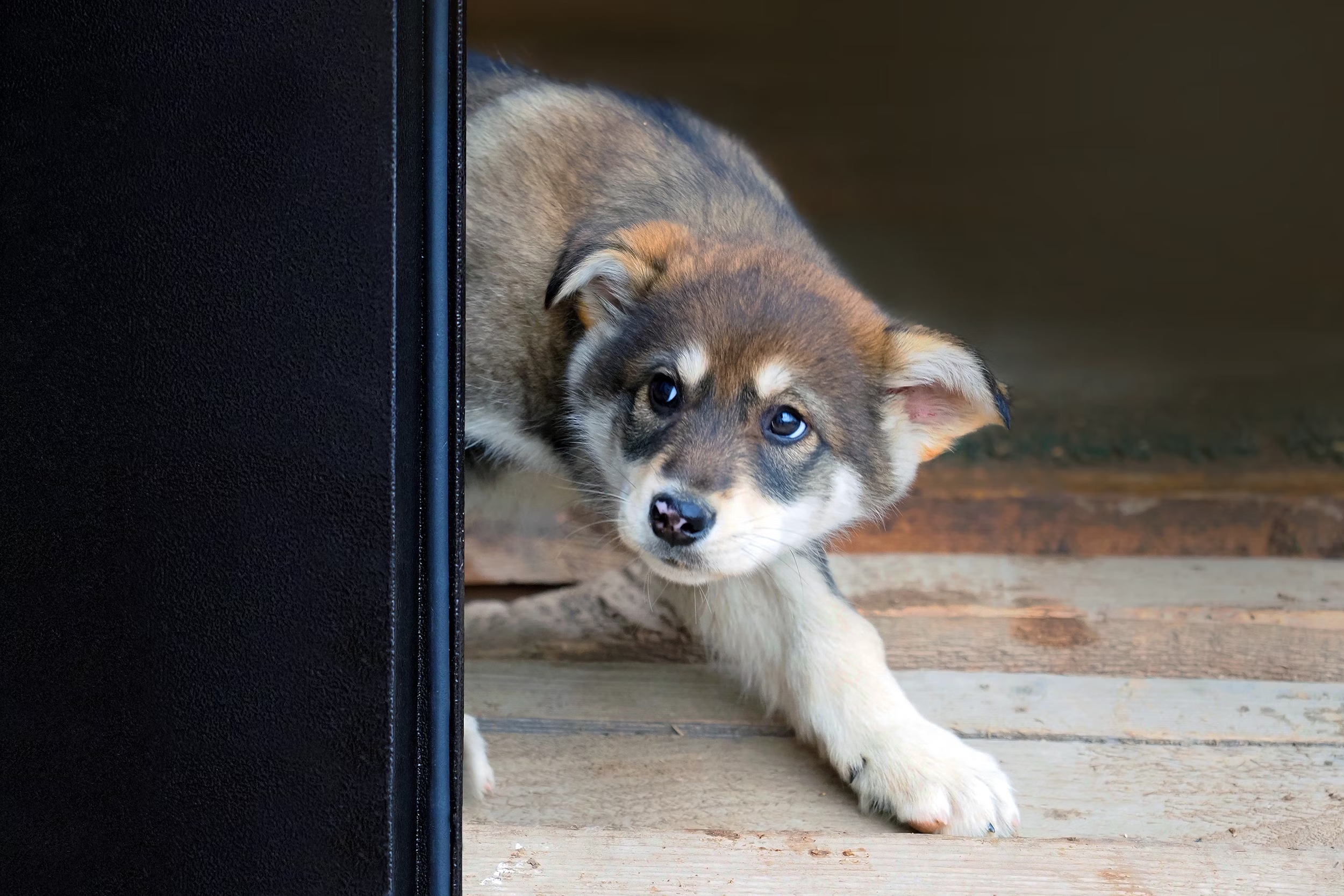
Anxious or fearful body language
An anxious or scared dog may cower, tuck their tail between their legs, and flatten their ears against their head. They may also let out an exaggerated yawn or lick their lips. If your dog is showing these signs, look for ways to remove any stressors or take them to a calm area where they feel safe and secure.Threatened body language
Dogs that feel threatened hold a stiff body posture, with their tail held high and rigid. They may also growl or show their teeth. This body language signals that they feel unsafe and may take steps to defend themselves against a perceived threat. It’s important to proceed cautiously if you see any of these signs. If possible, steer your dog away from the threatening situation before it escalates.
Alert body language
A dog that’s alert and interested in something happening around them typically holds their tail in a straight, stiff position. Their ears are often slightly forward, and their eyes wide. They may wag their tail in slight, side-to-side movements. It’s a good idea to watch your dog when you see this body language to see if whatever they are watching triggers another emotion (such as anxiety or protectiveness).
Aggressive body language
An aggressive dog may lunge, bark, snarl, or snap. They may also raise their hackles, make direct eye contact, and stand tall. If your dog is showing these signs toward a person or another animal, it’s crucial to take action and remove them from the situation before anyone gets hurt.
Next steps in decoding your dog’s body language
It takes practice and diligence to pick up on dogs’ subtle physical cues. If you want to learn more about interpreting your dog’s body postures, consider seeking the help of a certified dog trainer, veterinary behaviorist, or your pup’s veterinarian. These professionals can give you more detailed advice on interpreting your dog’s body language and responding appropriately.
With a better understanding of how your dog communicates, you can build a stronger bond with your furry friend and keep them safe and happy.
